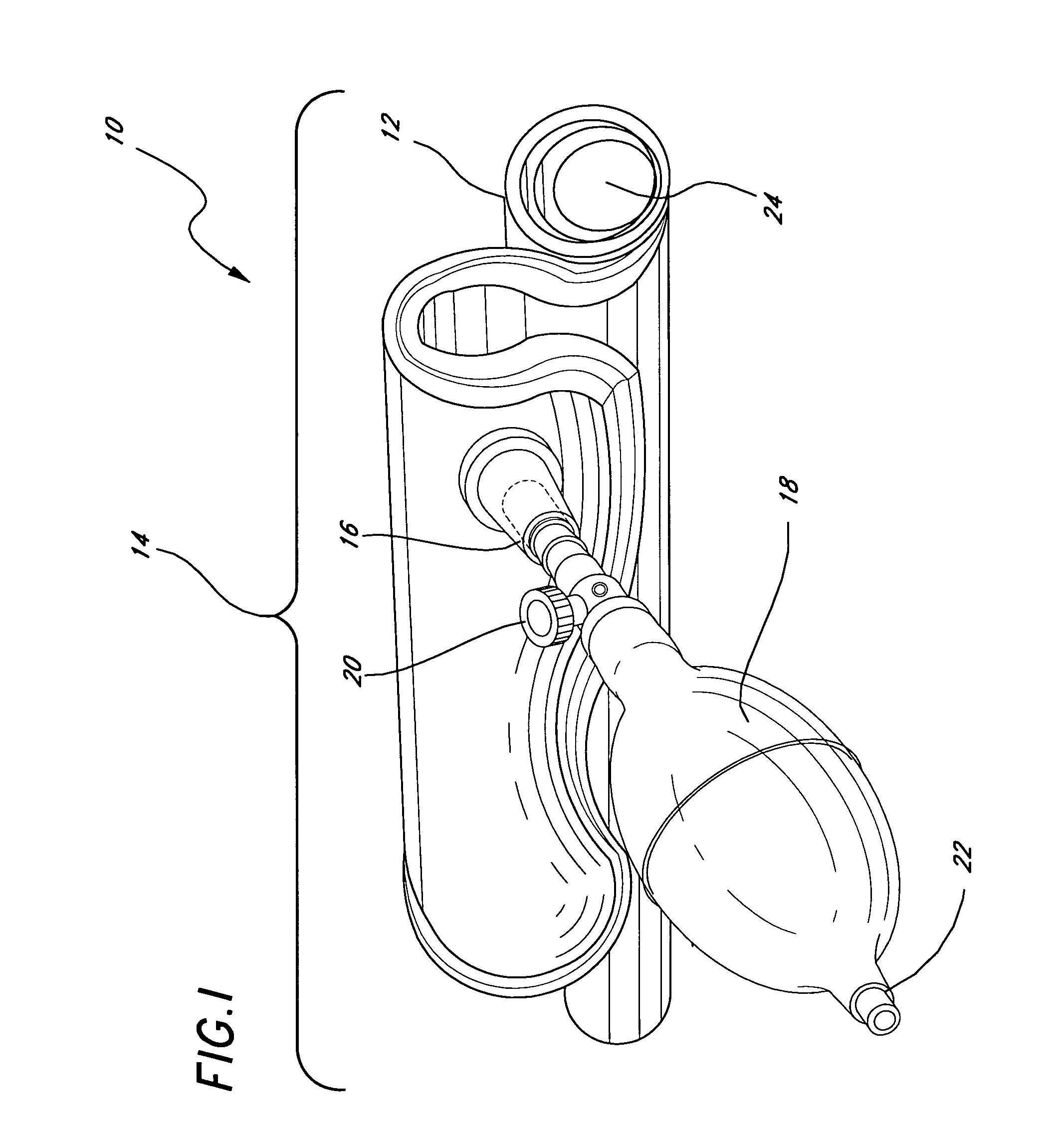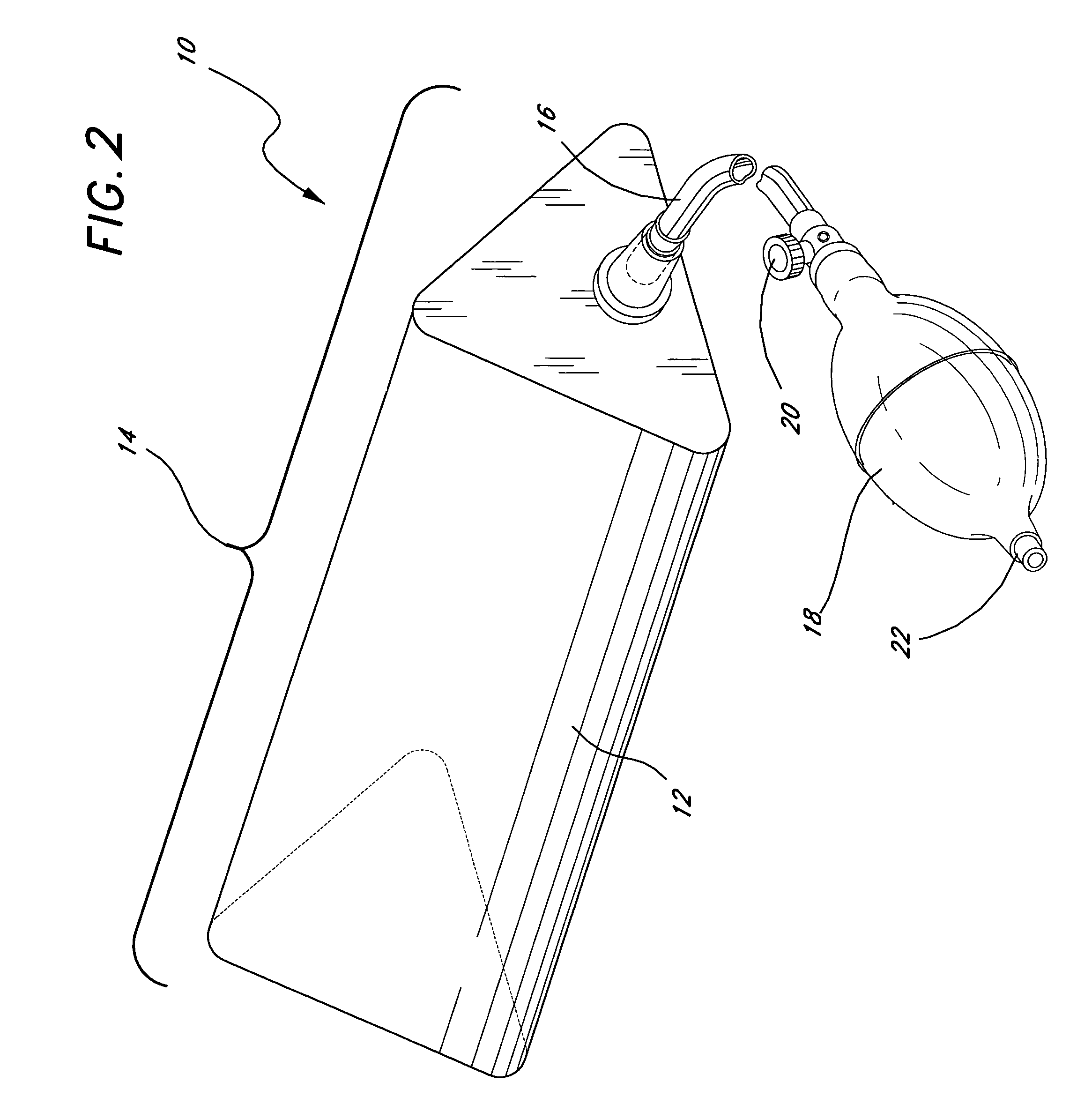Airway stabilizer for resuscitation
- Summary
- Abstract
- Description
- Claims
- Application Information
AI Technical Summary
Benefits of technology
Problems solved by technology
Method used
Image
Examples
Embodiment Construction
[0045]The following description is provided to enable any person skilled in the art to make and use the invention and sets forth the best modes contemplated by the inventor of carrying out his invention. Various modifications, however, will remain readily apparent to those skilled in the art, since the general principles of the present invention have been defined herein specifically to provide an airway stabilizing device for opening the airway of an unconscious patient.
[0046]FIG. 1 shows a view of the inflatable bladder embodiment of the neck support device 10 in a collapsed state. A collapsed, inflatable bladder 12 made of relatively thin polyethylene or vinyl or other suitable plastic takes up little space. For simplicity, the bladder 12 is shown having a single compartment, but the bladder may also have a more complex structure composed of multiple inflatable compartments. A hose 16 is in fluidic communication with an inflation source 18, here a rubber or plastic inflation bulb ...
PUM
 Login to View More
Login to View More Abstract
Description
Claims
Application Information
 Login to View More
Login to View More - R&D
- Intellectual Property
- Life Sciences
- Materials
- Tech Scout
- Unparalleled Data Quality
- Higher Quality Content
- 60% Fewer Hallucinations
Browse by: Latest US Patents, China's latest patents, Technical Efficacy Thesaurus, Application Domain, Technology Topic, Popular Technical Reports.
© 2025 PatSnap. All rights reserved.Legal|Privacy policy|Modern Slavery Act Transparency Statement|Sitemap|About US| Contact US: help@patsnap.com



